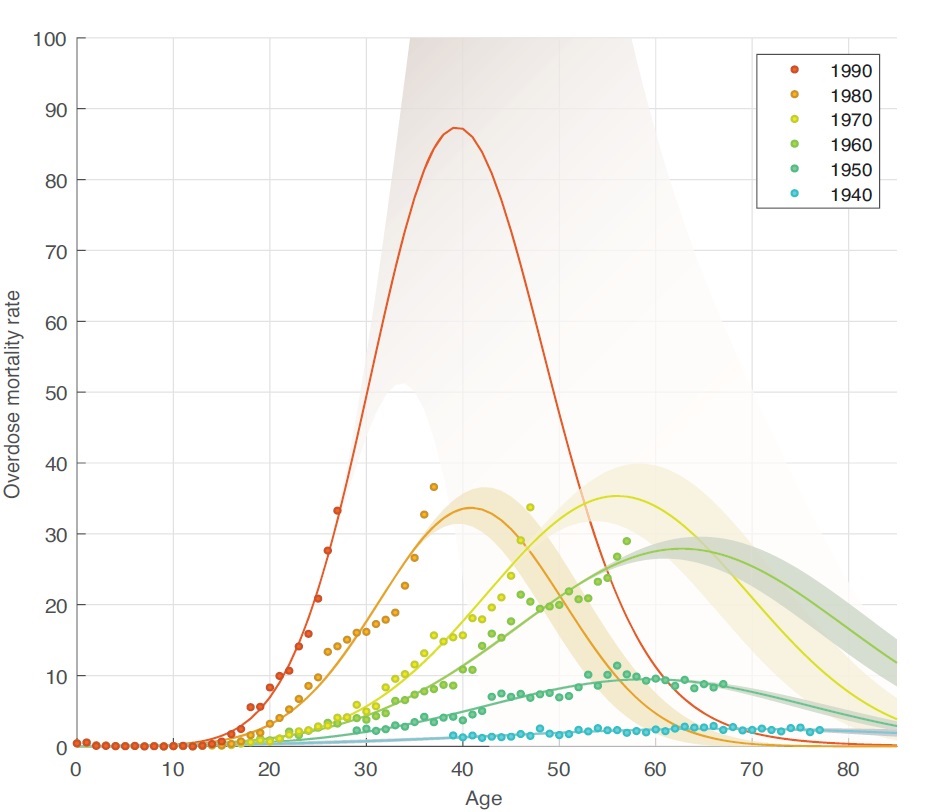Digital self-harm, where individuals anonymously post or share hurtful content about themselves online, has increased more than 88% since 2016. Between 2019 and 2021, about 9 to 12% of 13 to 17 year olds in the U.S. engaged in digital self-harm. The study also explored whether teens who experienced cyberbullying were more likely to engage in digital self-harm.
Tag: Demographics

90% of Floridians Believe Climate Change is Happening
FAU’s latest “Florida Climate Resilience Survey” found that 90% of Floridians believe that climate change is happening. Belief in human-caused climate change has surged among Florida Independents while slipping among Republicans. Despite these changes, the survey found enduring support among Floridians for increased government action to address the consequences of a warming planet.
UK rabbit owners can recognise pain in their pets, study finds
New research by the University of Bristol Veterinary School has found the majority of rabbit owners could list signs of pain and could mostly identify pain-free rabbits and those in severe pain, but many lacked knowledge of the subtler sign of pain.
Same ER. Same patient. Different visit. Different race and ethnicity?
The effort to find and fight health disparities relies on data from millions of patients, including their race and ethnicity. But a new study finds the same patient might have different data recorded at separate ER visits.
New Research Shows Sexual Minority Adults More Willing to Use Digital Health Tools for Public Health
In the current climate of increased medical mistrust, survey data show sexual minority adults are more open to using COVID-19 screening and tracking tools, challenging stereotypes and highlighting the need for inclusive health care solutions.
Study Details Toxic Elements Found in Stranded Whales, Dolphins Over 15 Years
Researchers evaluated the prevalence, concentration and tissue distribution of essential and non-essential trace elements, including heavy metal toxicants in tissue (blubber, kidney, liver, skeletal muscle, skin) and fecal samples. Findings reveal how toxicant levels relate to their sex, breed, age and other demographic factors.
Does Your Community Have a Personality Type?
U.S. counties and regions differ in political ideology. But do they differ in personality as well? Further, are people who ‘fit’ their communities healthier, happier, or more highly achieving than those who do not? A new study shows communities are diverse in terms of personality as well as demographics, and having like-minded people in one’s community is associated with positive outcomes.
SMART Recovery Meetings for Alcohol Recovery Appeal to People with More Social and Economic Stability and Lower Spiritual Leanings, Compared to Alcoholics Anonymous
Certain characteristics of people seeking remission from alcohol use disorder (AUD) are linked to their choice of recovery meeting, a new study suggests. Informal peer recovery groups—mutual-help organizations—play a crucial role for many individuals with AUD or other drug disorders. Such groups are proliferating and differ substantially in approach.
Scenarios for proactive measures and inclusive policies on migration in Europe
Migration is a complex and unpredictable phenomenon, often triggered by political crises, economic downturns, and natural or human-made disasters. A new policy brief and a White Paper authored by IIASA researchers and UK colleagues provides valuable insights and recommendations to support policymaking and increase understanding around the realistic implications of high-migration events.
Addressing adaptation inequalities in climate research
A new study proposes ways to better incorporate adaptation in climate change research, addressing the uneven distribution of adaptation capacities and needs worldwide.

Americans planning frugal uses for their 2023 tax refunds
Americans likely are receiving smaller tax refunds than they have in recent years, and most people will not be going out to spend this money, according to the February 2023 Consumer Food Insights Report.
AI Model Proactively Predicts if a COVID-19 Test Might be Positive or Not
Researchers trained five classification algorithms to create an accurate model to predict COVID-19 test results. Results identify the key symptom features associated with COVID-19 infection and provide a way for rapid screening and cost effective infection detection. Findings reveal that number of days experiencing symptoms such as fever and difficulty breathing play a large role in COVID-19 test results. Findings also show that molecular tests have much narrower post-symptom onset days compared to post-symptom onset days of serology tests. As a result, the molecular test has the lowest positive rate because it measures current infection.
Demographics, not bias, best predict traffic stops
Research from the lab of Calvin Lai, assistant professor of psychological and brain sciences in Arts & Sciences, suggests demographics, not bias, is the best predictor of racial discrepancy when it comes to who gets pulled over by police.
Novel Model Predicts COVID-19 Outbreak Two Weeks Ahead of Time
People’s social behavior, reflected in their mobility data, is providing scientists with a way to forecast the spread of COVID-19 nationwide at the county level. Researchers have developed the first data-driven deep learning model with the potential to predict an outbreak in COVID-19 cases two weeks in advance. Feeding the mobility data to epidemiological forecasting models helps to estimate COVID-19 growth as well as evaluating the effects of government policies such as mandating masks on the spread of COVID-19.

Deaths in the family can shape kids’ educational attainment in unexpected ways
Deaths of family members may trigger ripple effects across family networks, reverberating in the lives of children in complex and, sometimes, unexpected ways.
In a study, the researchers found that deaths in the family can affect the educational attainment of children. That impact most often is negative, but, in certain cases, a family death can improve the chances that children will further their education.
Survey: Barriers, Not Demographics, Affect Willingness to Pursue Veterinary Care
When it comes to seeking veterinary care for dogs, barriers to access – including a lack of trust – have more effect on the decision-making process than differences in race, gender or socioeconomic status.
Assessing the impacts of global climate change on population trends
The European Research Council (ERC) will fund groundbreaking research led by IIASA World Population Program Deputy Director Raya Muttarak, which will comprehensively address the impacts of climate change on population dynamics.
New tool tracks COVID-19 cases within NY school district boundaries
Cornell University has launched the NYS School District COVID-19 Tracker, an interactive, web-based mapping application that combines multiple sources of data on COVID-19, demographics and related topics by new York school district.

Demographics data helps predict NY flood insurance claims
In flood-prone areas of the Hudson River valley in New York state, census areas with more white and affluent home owners tend to file a higher percentage of flood insurance claims than lower-income, minority residents, according to a new study.
Utah’s young population contributes to relatively low COVID-19 death rate
Research from the Kem C. Gardner Policy Institute shows Utah’s relatively young population is contributing to a lower COVID-19 death rate than the nation as a whole.

Drug Overdose Epidemic is Transmitted from Old to Young, Study Shows
The generation a person was born into – Silent Generation, Baby Boomer, Generation X or Millennial – strongly predicts how likely they are to die from a drug overdose, and at what age. Within each generation, there was a steady march toward greater overdose risk at younger ages.

COVID-19 vulnerability maps warn of NYS counties’ risk factors
Rural counties in upstate New York are likely to be the state’s most vulnerable to a COVID-19 outbreak that could strain local health care infrastructure, according to an analysis by Cornell University demographers.
If you’re poor, poverty is an environmental issue
A survey from Cornell researchers – conducted among more than 1,100 U.S. residents – found that there were, in fact, demographic differences in how people viewed environmental issues, with racial and ethnic minorities and lower-income people more likely to consider human factors such as racism and poverty as environmental, in addition to more ecological issues like toxic fumes from factories or car exhaust.
Adapting to climate change: We’re doing it wrong
When it comes to adapting to the effects of climate change, scientists and policymakers are thinking too small, according to a new research review.